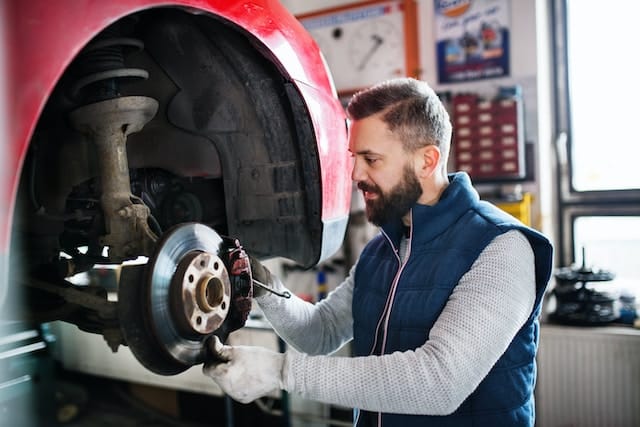
The brake pads and rotors are essential components of a vehicle’s braking system, playing a crucial role in ensuring safety on the road. This article aims to provide a comprehensive understanding of brake pad and rotor replacement, including their function, signs of wear, and factors that affect their lifespan.
Anatomy of the Braking System
To fully comprehend the importance of brake pads and rotors, it’s essential to understand their role within the braking system. Brake pads are the components that create friction when pressed against the rotors, ultimately slowing or stopping the vehicle. Rotors, also known as brake discs, are the rotating components attached to the vehicle’s wheel hub that work in tandem with the brake pads to halt the vehicle.
Signs Your Brake Pads and Rotors Need Replacement
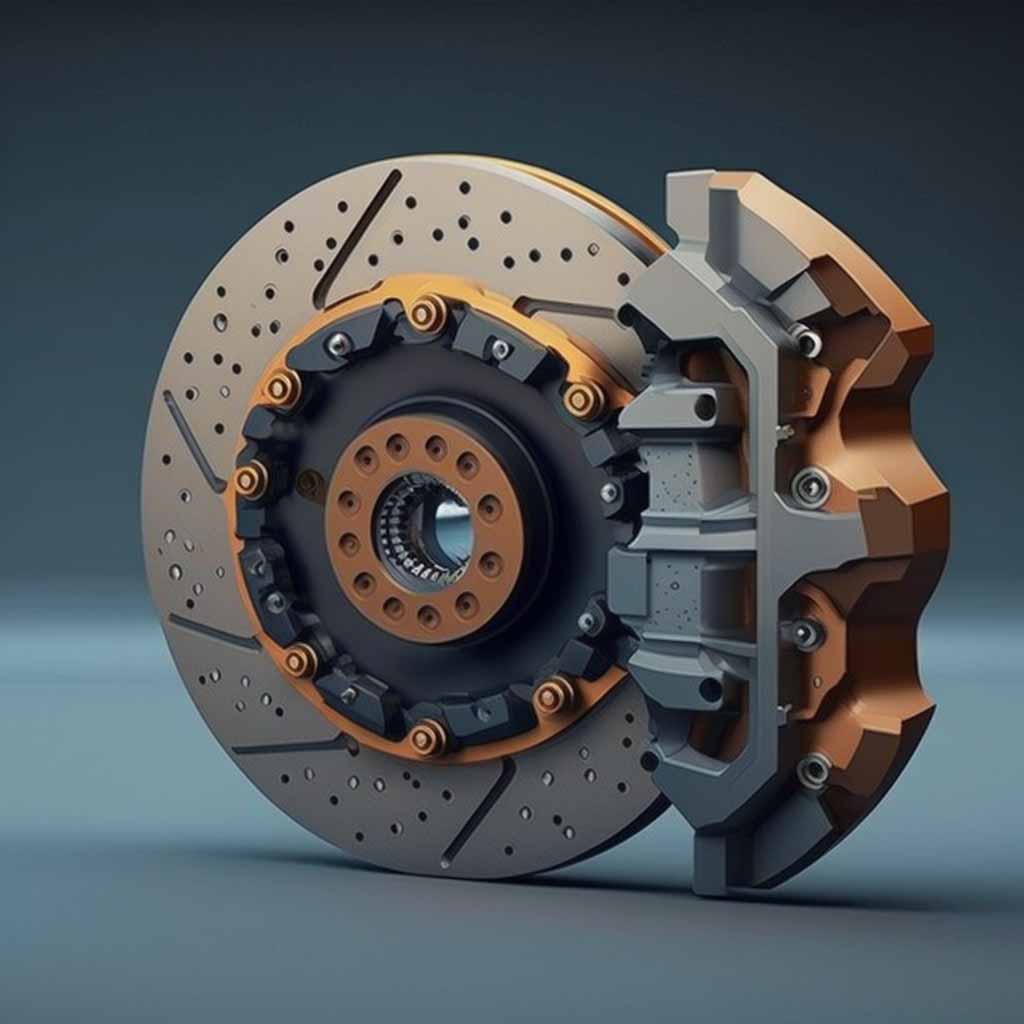
There are several indicators that your brake pads and rotors may need replacement, including:
Unusual noises
Squealing, grinding, or screeching sounds when applying the brakes may signal worn brake pads or damaged rotors.
Vibration or pulsation when braking
This can suggest warped or unevenly worn rotors.
Reduced braking performance
A longer stopping distance or a “spongy” feeling in the brake pedal could indicate worn brake pads or rotors.
Warning lights
Some vehicles may have dashboard warning lights that indicate a potential issue with the braking system.
Factors Affecting Brake Pad and Rotor Lifespan
Various Factors Can Influence The Lifespan of Brake Pads and Rotors
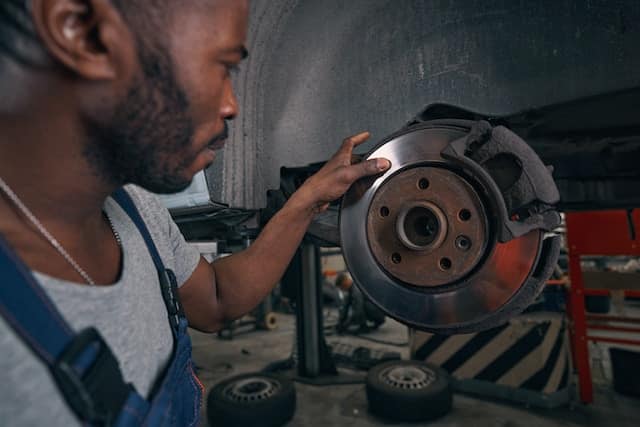
Driving habits
Aggressive braking or frequent stop-and-go traffic can cause faster wear.
Environment and road conditions: Dust, debris, and rough roads can contribute to wear and tear.
Material and quality
Brake pads and rotors made from high-quality materials generally have a longer service life.
Proper maintenance and inspections
Regularly checking and maintaining the braking system can help prolong its lifespan.
How Often Should Brake Pads and Rotors Be Replaced?
There’s no one-size-fits-all answer to the frequency of brake pad and rotor replacement, as it depends on various factors such as driving habits, environment, and vehicle type. Generally, brake pads should be replaced every 30,000 to 70,000 miles, while rotors may last between 30,000 and 100,000 miles. However, it’s essential to have your braking system inspected at regular intervals, as recommended by your vehicle’s manufacturer.
Cost of Brake Pad and Rotor Replacement
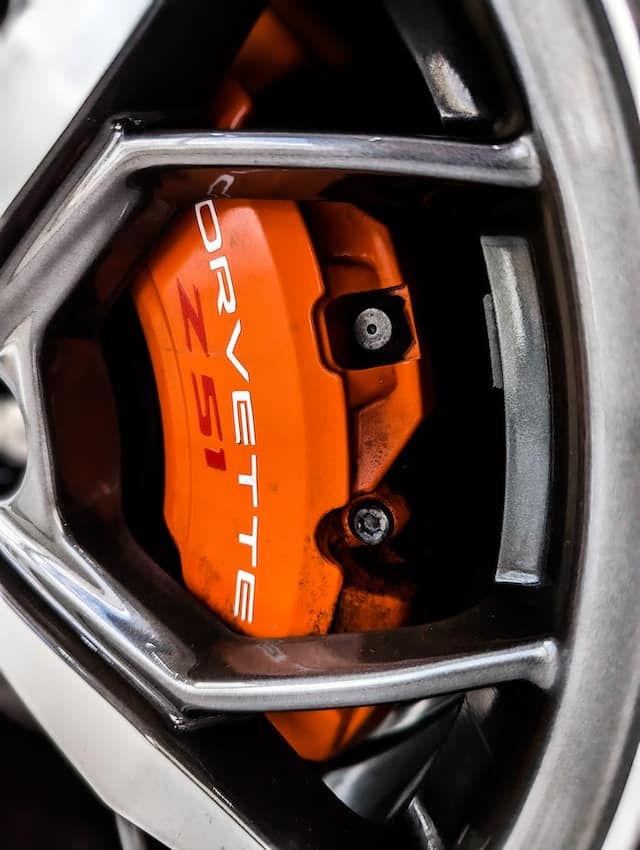
The cost of brake pad and rotor replacement can vary significantly based on several factors:
Vehicle make and model
Some vehicles may require more expensive or specialized parts.
Type and quality of replacement parts
Higher-quality components often come with a higher price tag.
Labor costs
The cost of labor can differ depending on your location and the repair shop. To save money on brake pad and rotor replacement, consider DIY replacement if you have the skills and tools, shop around for quotes, or take advantage of promotions or discounts.
Choosing the Right Brake Pads and Rotors
When selecting brake pads and rotors, consider the different types of brake pad materials and rotor designs available. It’s important to balance performance, lifespan, and cost to ensure the best choice for your specific vehicle and driving needs.
Cost of Brake Pad and Rotor Replacement: Common Scenarios for Popular Vehicles
Economy Sedan Brake Pad Replacement:
$100 – $250 per axle Rotor Replacement: $150 – $400 per axle Combined (Brake Pads and Rotors): $250 – $650 per axle
Mid-Size Sedan Brake Pad Replacement
$150 – $300 per axle Rotor Replacement: $200 – $500 per axle Combined (Brake Pads and Rotors): $350 – $800 per axle
Luxury Sedan Brake Pad Replacement
$200 – $400 per axle Rotor Replacement: $250 – $600 per axle Combined (Brake Pads and Rotors): $450 – $1,000 per axle
Compact SUV Brake Pad Replacement
$150 – $300 per axle Rotor Replacement: $200 – $500 per axle Combined (Brake Pads and Rotors): $350 – $800 per axle
Full-Size SUV Brake Pad Replacement
$200 – $350 per axle Rotor Replacement: $250 – $550 per axle Combined (Brake Pads and Rotors): $450 – $900 per axle
Pickup Truck Brake Pad Replacement
$200 – $350 per axle Rotor Replacement: $300 – $600 per axle Combined (Brake Pads and Rotors): $500 – $950 per axle
Please note that these cost ranges are approximate and can vary based on factors such as location, quality of parts used, and labor costs. It’s essential to get quotes from multiple repair shops to ensure you’re getting a fair price for your brake pad and rotor replacement.
FAQ: Brake Pads and Rotors Replacement: Ensuring Vehicle Safety and Performance
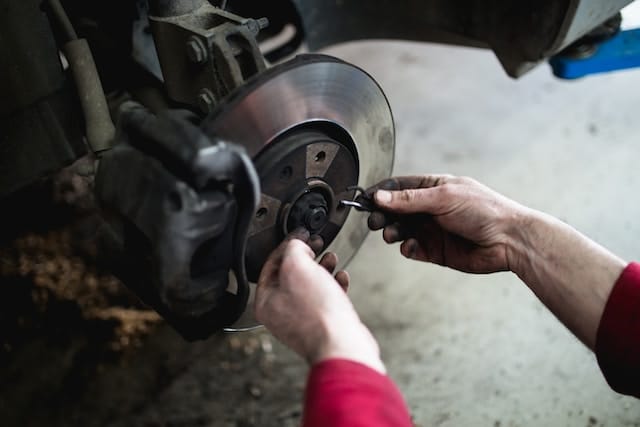
Q: Why are brake pads and rotors important for vehicle safety?
Brake pads and rotors are crucial components of a vehicle’s braking system, working together to slow down or stop the vehicle. Proper maintenance of these components is essential to ensure optimal braking performance and safety on the road.
Q: What are the signs that my brake pads and rotors need replacement?
Common signs include unusual noises (squealing, grinding, or screeching), vibration or pulsation when braking, reduced braking performance, and dashboard warning lights.
Q: How often should brake pads and rotors be replaced?
Generally, brake pads should be replaced every 30,000 to 70,000 miles, while rotors may last between 30,000 and 100,000 miles. However, it’s important to have your braking system inspected at regular intervals as recommended by your vehicle’s manufacturer.
Q: What factors affect the lifespan of brake pads and rotors?
Factors such as driving habits, environment and road conditions, material and quality of brake pads and rotors, and proper maintenance and inspections can influence their lifespan.
Q: How much does it cost to replace brake pads and rotors?
The cost can vary significantly based on factors such as vehicle make and model, type and quality of replacement parts, and labor costs. Generally, the combined cost for brake pads and rotors replacement ranges from $250 to $950 per axle, depending on the type of vehicle.
Q: Can I replace my brake pads and rotors myself?
If you have the necessary skills, tools, and knowledge, you can perform a DIY brake pad and rotor replacement to save on labor costs. However, if you’re unsure or inexperienced, it’s best to consult a professional to ensure your safety and the proper functioning of your braking system.
Q: How do I choose the right brake pads and rotors for my vehicle?
Consider factors such as the type of brake pad materials, rotor designs, and your specific vehicle and driving needs when selecting brake pads and rotors. Balancing performance, lifespan, and cost will help you make the best choice for your situation.
Q: Can I replace only the brake pads or rotors, or do I need to replace both at the same time?
While it’s not always necessary to replace both components simultaneously, it’s often recommended to do so for optimal braking performance. However, if one component is in good condition and the other requires replacement, consult a professional mechanic for guidance on the best course of action.
Q: How do I know if my vehicle has disc brakes or drum brakes?
Most modern vehicles have disc brakes on the front wheels and either disc or drum brakes on the rear wheels. To determine your vehicle’s braking system, consult your owner’s manual or visually inspect the brakes. Disc brakes feature a visible rotor and caliper, while drum brakes have a round drum shape behind the wheel.
Q: Can using high-performance brake pads and rotors improve my vehicle’s braking?
High-performance brake pads and rotors can offer improved heat dissipation, better friction, and longer lifespan compared to standard components. However, these benefits typically come at a higher cost. Consider your driving habits, vehicle type, and budget when deciding whether to invest in high-performance brake components.
Q: What are the consequences of neglecting brake pad and rotor maintenance?
Neglecting brake pad and rotor maintenance can lead to reduced braking performance, increased stopping distances, damage to other brake components, and potential safety risks. Regular inspections and proactive care can help prevent these issues and maintain a safe and reliable vehicle.
Q: How can I prolong the life of my brake pads and rotors?
To extend the lifespan of your brake pads and rotors, practice smooth and gradual braking, avoid overloading your vehicle, maintain proper tire inflation, and have your braking system inspected and maintained at regular intervals. Additionally, investing in high-quality brake components can contribute to their longevity.


